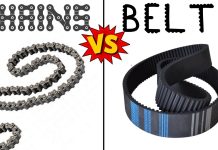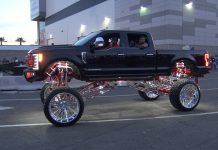Here’s the latest reader question, along with my reply!
Mark asks: Hello, Eric! I just donated $100 to your site, partly because I enjoy reading your knowledgeable and clear-eyed commentaries about automotive issues.
I am also hoping to get your advice about my vehicle situation. I presently drive an ’05 Odyssey with 172K miles on it. I like it quite a bit, not least because it is about as depreciated as it will ever get. My plan has been to drive it into the ground, then replace it with another Odyssey or other minivan maybe 5 years old. However, I have become concerned by your commentaries about automakers’ efforts to squeeze teensy weensy amounts of fuel economy out of their vehicles by incorporating things like 10-speed transmissions, which in turn threaten hugely expensive repairs down the road.
Or, just today, you commented about safety systems which can actually be threats to safety.
If I keep my Odyssey long enough, and I figure it most likely has at least three years left, I will find it harder and harder to avoid more and more of these sorts of features. Five years old now is 2013 or 14, and three years from now five years old will be 2016 or 17. Or else, I will have to opt for an older replacement vehicle than the five-year old vehicle I have been expecting to buy.
What do you think I should do? Still to my current plan and not worry about it, or perhaps replace my current Odyssey sooner so I can get a 5-year old replacement without having to buy a bunch of stuff I don’t want? Or, should I stick to my current plan, but buy a replacement vehicle which is more than five years old if that is necessary to avoid these troublesome modern features? Please let me know. Thanks!
My reply: Thanks, first of all, for supporting the site! Having been anathematized by Goo-guhl and otherwise guilty of heresy, it’s reader support that keeps this machine on the road!
Ok, on your question: We are all this boat together. Because all cars are being encrusted with these “features” of dubious merit such as very small (for the car . . or the truck) highly turbocharged engines and the eight, nine and ten-speed transmissions we’ve been talking about – even family and commuter cars.
Plus technologies such as automatic stop-start and “mild hybrid” systems with 48 volt electrics – all controlled by multiple computers tied to numerous sensors. Add to this a layer of “safety” systems which are becoming very aggressively pre-emptive and also very technologically elaborate (and so, expensive).
The general theme is that cars are increasing in complexity to a degree that – in my view – doesn’t make practical or economic sense. Their cost is rising and at the same time, they depreciate more severely precisely because of the complexity, which has greatly increased repair costs and also because a lot of the tech ages quickly. You end up with a much more (and much sooner) disposable car. It works ok if you go from lease to lease – or don’t mind buying a new car every six or seven years (or less).
But for most people, it’s bad news.
As to why this is happening:
Part of it is the mandates – now almost innumerable – issuing from Washington, which no longer accepts any limits on its self-appointed role as Car Designer in Chief.
One mandate in particular can be blamed for almost all the over-the-top changes we’re seeing now and which are coming. It is the almost doubling of federal Corporate Average Fuel Economy (CAFE) mandatory minimums decreed by the Obama administration’s EPA. I’ve written at length about this before but in brief, CAFE established a “fleet average” MPG number which each automaker’s fleet must meet – or else the government applies “gas guzzler” fines as an inducement to meet them.
These fines, of course, are passed on to car buyers.
The CAFE standard is now on track to rise to almost 50 MPG on average by model year 2025, which is only about five years from now. The only cars currently on the market capable of averaging 50 MPG are small hybrids like the Toyota Prius, Hyundai Ioniq and Kia Niro.
To get non-hybrid cars even close to averaging 50 MPG will require things even more elaborate/complex/expensive than transmissions with multiple overdrive gears and very small displacement engines that cycle off as much as possible, which are turbocharged to provide on-demand power.
It will require adding more hybrids – and electric cars – to a car company’s model lineup, to even out the math.
Expect the engineering solutions to become absolutely desperate as we get closer to 2025.
So, what to do?
Most people do not realize the there is a tsunami of expense/complexity and nannyism of unprecedented magnitude coming. Hence, it is a very good time to snatch up a lower-miles car without as much of this stuff as you can find – before the prices of these cars begins to rise, as people realize what’s in store for them with regard to new cars.
The stuff made before about 2015 is still largely functionally and economically sane. Most will still have naturally aspirated engines (no turbo) and five or six-speed transmissions. Auto-stop is fairly rare in 2015 and older vehicles. If you go slightly older, you can often avoid direct injected engines (these are prone to carbon fouling) as well as most of the really over-the-top “safety” stuff, such as automated emergency braking, lane keep assist and the uber-creepy facial recognition stuff in the latest Subarus (more is coming).
If your current Odyssey is sound – and from your description, it sounds as though that’s the case – I would continue to drive it and take care of it for as long as it holds up (don’t sweat the miles or the age; if it runs well, keep on running!) while at the same time also beginning my search for its replacement. You may have five or six years life (or more) left in the current Odyssey.
Honda’s V6 is exceptionally durable; the same engine in the Accord often goes for 300,000 miles. The weaker link is the transmission – but even if it does go, replacing it might well be worth doing if it means getting another 2-3 years of service out of the vehicle.
It’s what I’d do, assuming the vehicle was otherwise still sound.
Meanwhile, you’ll have the incomparable luxury of time to find your back-up Odyssey (or similar). Because you’re not pressured to find one right now, you can be choosy. And the used market is pretty quiescent … for now.
If all goes to plan, you’ll be able to drive your current Odyssey for many more years – and then be in a position to drive the “new” one for at least ten more.
I suspect that will be long enough to get you – and hopefully many others who proactively do the same – through the storm that’s coming.
. . .
Got a question about cars – or anything else? Click on the “ask Eric” link and send ’em in!
If you like what you’ve found here please consider supporting EPautos.
We depend on you to keep the wheels turning!
Our donate button is here.
If you prefer not to use PayPal, our mailing address is:
EPautos
721 Hummingbird Lane SE
Copper Hill, VA 24079
PS: Get an EPautos magnet (pictured below) in return for a $20 or more one-time donation or a $5 or more monthly recurring donation. (Please be sure to tell us you want a sticker – and also, provide an address, so we know where to mail the thing!)
My latest eBook is also available for your favorite price – free! Click here. 












I have an 05 odyssey as well and its running fine with 200K miles. I did just replace the timing belt, water pump and bearings. The lower ball joints went out at 180K so i just changed the whole lower control arm rather than press out the bearing because the bushings will be worn on the control arm too. As for the transmission the 05 has an inline transmission filter that is serviceable its located under the ABS control by the brake master. The only way to get to it is to remove the air box, resonator, and battery stand. Its a pain but worth it. I kept the resonator out. I did a 3x drain and fill and the transmission was fine. It had the original trans fluid until 190K miles. I think peoples transmissions for the odyssey were going out from towing and not being serviced properly. Do not do the power flush at the transmission shops. Drain and fill only. The good thing about these vans is the pilot fwd, vue fwd, have the same transmission and the pilots was more durable. Another thing to do is to adjust the valve lash. Lots of youtube and forum support on these vans. I told my wife i want to keep this van running another 7 years. I will repaint and rebuild if necessary. You could also get more power from a head and cam from a accord ex-l. Same block with 300 crank hp.
I would never risk a VW auto trans.BTDT.Couldnt get me in a VW ever again.However it had a fantastic check engine light.It was always on,meaning every smog check was $$$$
Hi Fred,
The “check engine” light only means the OBD system has registered a code. It does not necessarily mean there is an expensive problem. It could be something as simple as the gas cap not having been tightened fully. But you need a scan tool to read – and clear – the codes.
I’ve been thinking about this a lot as I consider my next car. I think I’m going to get a low mileage VW TDI, not sure which one yet. I’ve been glad to see you can even find them with a manual transmission. Do you know if the manual is preferable over the automatic in the VWs? Are they more reliable, or are they both pretty dependable? In that same consideration is there much difference in terms of performance and reliability between the golf, Passat, and Jetta?
Absolutely get the manual. Avoid the DSG. The DSG requires a specific maintenance schedule and if the procedure isn’t followed correctly it can lead to failure. Also be aware there’s a timing belt not chain. And fuel choice is pretty important. There was a problem with fuel pumps destroying themselves and VW determined it was due to water in the fuel line. It is recommended you avoid truck stop fuel and stations that don’t have much traffic. Also cetane level can make a big difference in milage. I used to run Power Service in every other tank. It boosted cetane and added some lubricant that low sulfur diesel didn’t have. It was a pain for sure because leaving the bottle in the hatch stunk up the interior but small price to pay if it meant not destroying the fuel pump.
If you keep to the maintenance schedule they’re pretty reliable and the consumable parts aren’t too bad. It is also possible to fit a bypass oil filter under the hood so you can run 2-3 times further between oil changes (but pretty sure it will void the warranty).
http://forums.tdiclub.com is a fantastic resource. Take the time to go through and read up before you buy so you know what you’re getting into. I don’t want to discourage you from getting one, in fact I was pricing diesel Touaregs the other day after Eric pointed out they’re back on the lots and the pricing is pretty tempting. But they are a far cry from a ’70s era 300D and certainly not a Cummins engine.
Hi Adam,
Get the manual. For all the reasons others have already adduced. It is inherently simpler and almost certainly will never give you any problems over the life of the car, plus the car will be more fun to drive and (assuming you can drive) you will actually get better mileage with the manual.
Cuba might be more like the future than we think. Keeping pre-Obama cars operational might involve a lot of retrofitting and custom machining. Just the thing for shops that have their own CNC mills and 3D printers.
One thing about the 1950s cars in Cuba is most of them are mechanically more like Soviet trucks than Packards. There’s a fairly common upgrade to install a Soviet Diesel engine and drivetrain because the parts are available. And many of their body panels have been replaced and replaced and replaced again. It is possible to keep an automobile running forever as long as there are skilled people who can do all the repairs. It comes down to cost of labor mostly.